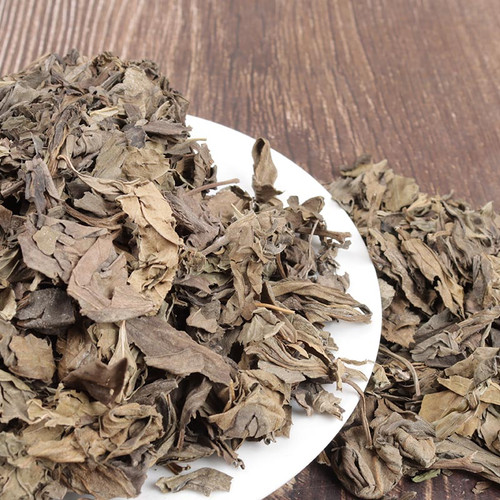Product Overview
Parts used: Dried capitulum
TCM category: Cool/Acrid herbs that release the Exterior
TCM nature: Cool
TCM taste(s): BitterSweet
Meridian affinity: Liver Lung
Scientific name: Chrysanthemum morifolium
Other names: Jú huā, Florist's daisy, Hardy garden mum, Mum, Chrysanth
Use of chrysanthemum flowers (Ju Hua) in TCM
Please note that you should never self-prescribe TCM ingredients. A TCM ingredient is almost never eaten on its own but as part of a formula containing several ingredients that act together. Please consult a professional TCM practitionner, they will be best able to guide you.
Preparation: Keep only the capitulum and dry under the shade
Dosage: 5 - 15 grams
Main actions according to TCM*: Relieves the Exterior and clears Heat. Relieves Wind-Heat from the Liver channel and clears the eyes. Cools Heat of the Liver and Kidney due to Yin Deficiency. Relieves patterns of Liver Yang rising.
Primary conditions or symptoms for which chrysanthemum flowers may be prescribed by TCM doctors*: Common cold Headache Uveitis Impaired vision Fever
Contraindications*: Not for those with Qi Deficiency with diarrhea and/or no appetite.
Common TCM formulas in which chrysanthemum flowers are used*:
For hypertension combine chrysanthemum flowers with dandelions (Pu Gong Ying) and honeysuckle flowers (Jin Yin Hua).
For improving vision, relieving tinnitus and headaches combine chrysanthemum flowers with goji berries (Gou Qi Zi).
For Exterior Wind-Heat with symptoms of headache, colds, sore throat combine chrysanthemum flowers with wild mint (Bo He), platycodon roots (Jie Geng) and greater burdock fruits (Niu Bang Zi).
For high blood pressure combine chrysanthemum flowers with gambir stems and thorns (Gou Teng), cassia seeds (Jue Ming Zi) and white peony roots (Bai Shao).
For Liver and Kidney Yin Deficiency combine chrysanthemum flowers with glossy privet fruits (Nu Zhen Zi) and goji berries (Gou Qi Zi).
For External Wind Heat with fever, sore throat, chills and red eyes combine chrysanthemum flowers with mulberry leaves (Sang Ye), forsythia fruits (Lian Qiao), wild mint (Bo He) and platycodon roots (Jie Geng).
For Deficient Kidney and Liver Yin patterns with symptoms such as dizziness, vertigo, blurred vision, headache and hypertension combine chrysanthemum flowers with heal-all spikes (Xia Ku Cao), gambir stems and thorns (Gou Teng) and baikal skullcap roots (Huang Qin).
For Wind-heat headache combine chrysanthemum flowers with angelica roots (Bai Zhi) and szechuan lovage roots (Chuan Xiong).
For Liver fire or Wind-Heat with red and painful eyes combine chrysanthemum flowers with cassia seeds (Jue Ming Zi) and mulberry leaves (Sang Ye).
Key TCM concepts behind chrysanthemum flowers (Ju Hua)'s properties
In Traditional Chinese Medicine (TCM), chrysanthemum flowers are plants that belong to the 'Cool/Acrid herbs that release the Exterior' category. Herbs that release the Exterior aim to to treat the early stages of diseases that affect the upper respiratory tract, the eyes, the ears, the nose, the throat or the skin. TCM believes that External diseases such as colds or allergies can only invade the body if the External environment overwhelms our Wei Qi (the TCM version of the immune system). In order to counteract this invasion Cool/Acrid herbs aim to induce sweating by dilating our capillary pores so that they release more sweat. The belief is that this will expel the disease from the body and stop it from invading further.
As suggested by its category chrysanthemum flowers are plants that are Cool in nature. This means that chrysanthemum flowers tend to help people who have too much "heat" in their body, although with less effect than a plant that would be Cold in nature. Balance between Yin and Yang is a key health concept in TCM. Those who have too much heat in their body are said to either have a Yang excess (because Yang is Hot in nature) or a Yin deficiency (Yin is Cold in Nature). Depending on your condition chrysanthemum flowers can help restore a harmonious balance between Yin and Yang.
Chrysanthemum flowers also taste Bitter and Sweet. The so-called "five elements" theory in Chinese Medicine states that the taste of TCM ingredients is a key determinant of their action in the body. Bitter ingredients like chrysanthemum flowers tend to have a cleansing action on the body by clearing heat, drying dampness and promoting elimination via urination or bowel movements. On the other hand Sweet ingredients tend to slow down acute reactions and detoxify the body. They also have a tonic effect because they replenish Qi and Blood.
The tastes of ingredients in TCM also determine what organs and meridians they target. As such chrysanthemum flowers are thought to target the Liver and the Lung. In TCM the Liver is often referred as the body's "general" because it is in charge of regulating the movements of Qi and body fluids. It also takes a leading role in balancing our emotions. In addition to performing respiration, the Lungs are thought to be a key part of the production chain for Qi and the body fluids that nourish the body.
Use of chrysanthemum flowers (Ju Hua) as food
Chrysanthemum flowers are also eaten as food.








